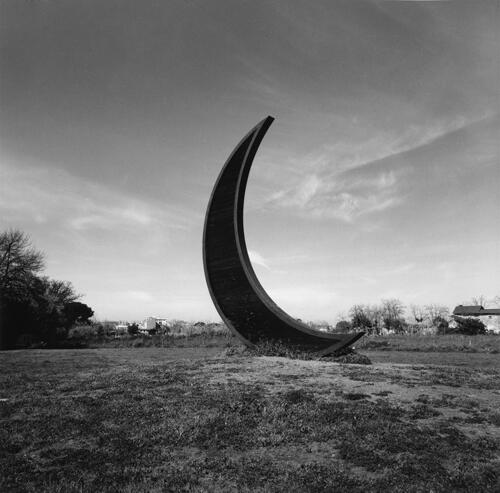Graciela Iturbide
MAM ,Mexico City
From April 2 to June 19, the Museum of Modern Art is presenting what has been considered Graciela Iturbide’s first retrospective show in Mexico, under the fine curatorship of Marta Dahó and sponsored by MAPFRE Foundation. The exhibition, with a careful and elegant museographic arrangement, showcases works made by the artist between the years 1969 and 2008. The show is sufficiently complete without being exhausting, and allows the viewer to recognize the best moments in this author’s fruitful career, placing the value of the work itself in the forefront, without excessive curatorial pretensions. The show includes some little known photos, but we can find several of the icons which identify Graciela Iturbide, allowing us to appreciate her mastery as a photographer, her talent as an artist and the seductive visual quality of her prints.

With discrete formats and amiable supports, Iturbide’s prints exhibit an exquisite tonal richness. Her scale of grays is always closer to black than to white, giving great warmth to the images and turning them richer in hues and textures. She has much more than what may be termed “a good eye”: an extreme ability to establish a connection with her surrounding environment and to convey the feeling that the world, as she photographs it, is an extension of her own sensitivity.
A preamble to the exhibition includes four self-portraits made in 1991, 1993, 1996 and 2003, respectively, and the retrospective proper begins with the photos of the series Seris: Los que viven en la arena (Seris. Those who live in the sand), a project carried out by Graciela in the Sonora desert in 1979, in which she already appears as a magnificent portrait painter displaying her mastery of the photographic language and with an excellent as control of the relationships between subjects and spaces. The famous Mujer ángel (Angel Woman), one of the most suggesting photos by this order, it is followed by Juchitán (1979-1986), one of her best known series which includes Nuestra señora de las iguanas (Our lady of the lizards) (1979), and the series En el nombre del padre (In the name of the father), of 1992, which is a tremendous and direct representation of sacrifice, as metaphor for and confirmation of the relationship with the sacred.
Other projects shown in the retrospective include photos taken in Panama, India, or Los Angeles city, a group of heliogravures with images obtained in the Oaxaca Botanical Garden, and a selection of photos of the series El baño de Frida (Frida’s bath?), a photographic essay that is so intimate that it seems to be autobiographical. Graciela Iturbide started her work as a photographer in the late 60’s. She was an assistant to and a disciple of Manuel Álvarez Bravo, and looking at this retrospective carefully, one may find stylistic details reminiscent of the work of certain classic artists such as Cartier Bresson and Paul Strand.
Having been the recipient of the Hasselblad Award in 2008, today her work may be considered an emblem of contemporary Mexican photography. And it is indeed hard to find photogra- phers capable of summarizing an iconographic tradition with such fidelity and with such a strong personality, at the same time enriching it with the contributions of truly unmatched poetic intuition and spirituality.
-
 Nuestra señora de las iguanas/ Our lady of the lizards), 1979. Juchitán, Mexico, 1979
Nuestra señora de las iguanas/ Our lady of the lizards), 1979. Juchitán, Mexico, 1979




